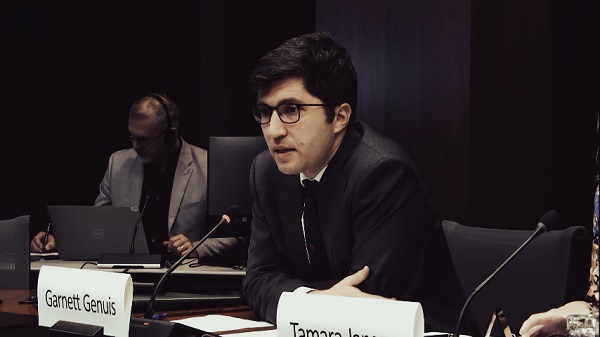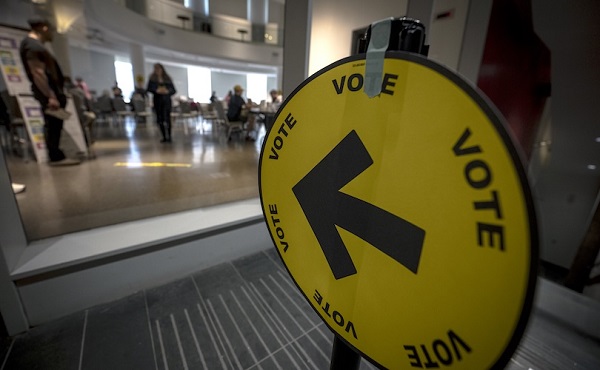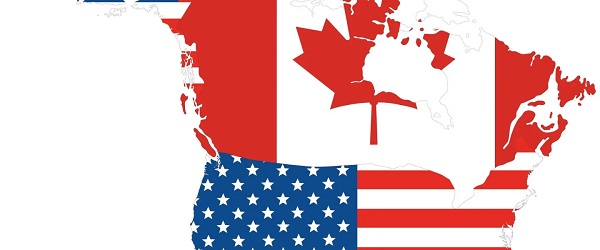Brownstone Institute
Justice Is Served: Jay Bhattacharya Chosen to Be NIH Director
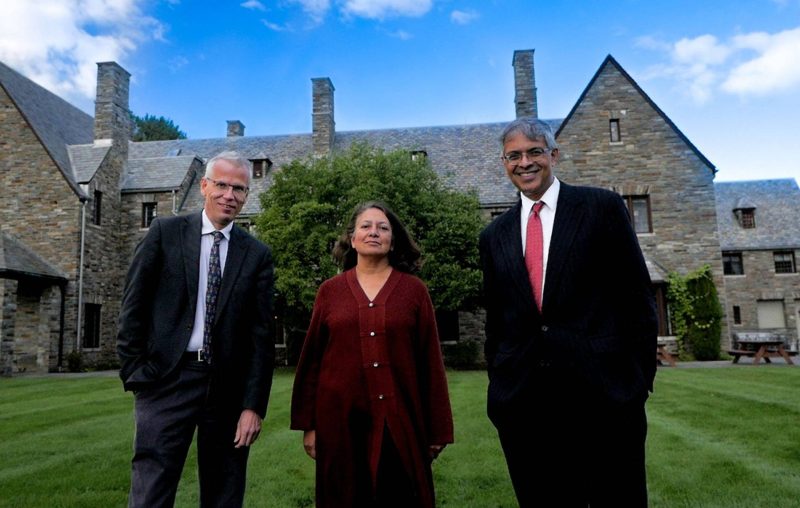
Martin Kulldorff, Sunetra Gupta, Jay Bhattacharya. Authors of the Great Barrington Declaration
From the Brownstone Institute
By
“At some point in summer of 2020, I decided—what is my career for? If it’s just to have another CV line or a stamp, I’ve wasted my life—that I would speak no matter what the consequences were.”
Many years ago, I was at the wedding of a good friend, a guy who everyone seemed to like. He was/is humble, considerate, kind, and down to earth. I remember telling his mother while at the wedding that I would tell anyone that, “If you don’t like him, then the problem is you.”
I also feel that way about Stanford health economist Jay Bhattacharya. Jay’s nomination by President-elect Trump to be Director of the National Institutes of Health has been a long time coming and is a hopeful signal that national health research policy is headed in the right direction.
Jay was right about all the big things during the Covid pandemic and was an important counter to the destructive hubris of lockdown and mandate-promoting public health leaders and scientists in the US. Along with Martin Kulldorff and Sunetra Gupta, Jay took enormous personal and professional risks in drafting the Great Barrington Declaration in October of 2020. In response to the highly age-stratified mortality of Covid-19 and with the threat of serious collateral damage of continuing lockdowns, school closures, and mandates, the GBD instead promoted the policy of focused protection for vulnerable elderly and infirm people while allowing young and healthy people to live their lives.
The virus was going to infect everyone eventually and establish herd immunity, and there was no evidence that a vaccine (none approved at the time) would stop that natural process. The big question was how to deal with a natural disaster without making the situation much worse. Thus, the debate was focused protection versus unfocused protection—sheltering everyone regardless of their risk of mortality or serious disease until the entire population could be vaccinated with a vaccine of unknown efficacy and net benefit.
At least that’s the debate that should’ve happened. Unfortunately, it didn’t. Jay and his GBD coauthors were attacked, threatened, and slandered. When Jay’s research group published a study showing that the seroprevalence of Covid-19 in Santa Clara County in California was much higher than previously believed, it destroyed the delusion that the virus could be eliminated, that containment was at all possible. Many people didn’t want to hear that, and Jay was subjected to numerous attacks in the media, including a defamatory article in BuzzFeed claiming he was funded by dark money and implied he used questionable methods because he was biased toward the study’s outcome.
The fact that he shortly thereafter authored a paper showing very low seroprevalence in Major League Baseball franchises wasn’t enough to prove his objectivity. The message put forth by the public health establishment would simply not allow any dissent or debate. The policy needed to drive The Science™, and lower-case science could not be allowed to drive the policy.
I signed the Great Barrington Declaration the day it was published on October 4th, 2020. I had seen, and was greatly impressed by, interviews of Jay by Peter Robinson in March and April of 2020 and was heartened by Jay’s calm display of knowledge and humility. Jay described in one of these interviews the uncertainty surrounding the number of people infected and the claims being made by experts like Anthony Fauci regarding the infection fatality rate:
They don’t know it and I don’t know it. We should be honest about that. And we should be honest about that with people who make these policy decisions when making them. In a sense, people plug the worst case into their models, they project two to four million deaths, the newspapers pick up the two to four million deaths, the politicians have to respond, and the scientific basis for that projection…there’s no study underlying that scientific projection.
When asked about the potential for collateral damage to lockdowns, “It’s not dollars versus lives, it’s lives versus lives.” An understanding of the responsibility to avoid collateral harm of lockdowns was essential yet was in extremely short supply. Jay was attacked for this nuanced message. He got emails from colleagues and administrators telling him that questioning the high infection fatality rate was irresponsible. Yet, someone had to do it. However, the interviews went viral, because Jay gave millions of people something they didn’t have and desperately needed. He gave them hope.
As the year went on, Jay became the face of the opposition to unfocused protection, appearing in countless interviews and writing countless articles. He became an advisor to Florida Governor Ron DeSantis, who vowed to not lock down the people of Florida again after an initial wave of closures. When waves of Covid inevitably hit Florida, Stanford students papered the campus with pictures of Jay next to Florida death rates, implying Jay’s nuanced message was responsible for the deaths of thousands of people. When the age-adjusted mortality rate of Florida ended up being rather average compared to other states, including lockdown and mandate-happy California, no one apologized.
YouTube censored a public forum with Jay and Martin Kulldorff and Governor DeSantis, where they made claims about the hazards of continuous lockdowns, school closures, and mandates that months before wouldn’t have been at all controversial. After the GBD was published, Jay and Martin were invited to the White House by Covid advisor Scott Atlas to discuss the idea of focused protection with President Trump. Despite that meeting, the political battle continued to be an uphill fight.
The response of federal officials was shameful. Fauci and White House Covid Advisor Deborah Birx boycotted the meeting. Then NIH Director Francis Collins called for a “swift and devastating takedown” of the GBD’s premise and called the authors “fringe epidemiologists.” There simply was no appetite at the highest levels for a nuanced message or any debate whatsoever. Media coverage of Jay and other Covid response critics continued to be toxic.
Yet Jay’s appearances and message continued to inspire millions of people and give them hope. I began writing in support of focused protection and against the constant doom-saying that was harming everyone, especially children. I met Jay in the fall of 2021 because of my writing, at a conference organized by Brownstone Institute. “I think we are making a difference,” he said after shaking my hand. Like many other people he had inspired to take a stance against Covid hysteria, I needed to hear that.
The next day, Jay was preparing to give his speech in front of a small crowd in the ballroom, and I sat next to him while he reviewed his notes during the previous speaker’s talk. Although he was dressed in a suit and tie, when glancing down, I noticed Jay had a hole in his dress shoe. This truly wasn’t about money or even status. He was simply doing what he believed was morally right.
Later on, Jay helped spearhead a couple of Covid-related projects I was also involved in (I was there largely due to his influence). First was the Norfolk Group, which produced a resource document for the US Congress titled “Questions for a COVID-19 Commission” and the second was Florida’s Public Health Integrity Committee formed by Governor DeSantis and led by Florida Surgeon General Joe Ladapo. Both groups attempted to bring accountability for the US public health response, and I believe they were successful in spotlighting just how wrong and harmful lockdowns and mandates were for the very public they were supposed to help.
During the initial Norfolk Group meeting, Jay often talked about the moment of no return, “crossing the Rubicon,” as he put it, the moment that each one of us made a conscientious decision to stand up against the mob. He later recalled in an interview with Jordan Peterson: “At some point in summer of 2020, I decided—what is my career for? If it’s just to have another CV line or a stamp, I’ve wasted my life—that I would speak no matter what the consequences were.”
The world has benefitted from Jay’s crossing of the Rubicon. His nomination, after years in the wilderness and on the “fringe” of public health and health policy, restores a sense that there is in fact justice in the world. Now he moves on to the significant task of reforming health research policy. We should be cheering him on all the way.
And if you don’t like Jay, then the problem is you.
Republished from the author’s Substack
Author
Brownstone Institute
The Doctor Will Kill You Now

From the Brownstone Institute
Way back in the B.C. era (Before Covid), I taught Medical Humanities and Bioethics at an American medical school. One of my older colleagues – I’ll call him Dr. Quinlan – was a prominent member of the faculty and a nationally recognized proponent of physician-assisted suicide.
Dr. Quinlan was a very nice man. He was soft-spoken, friendly, and intelligent. He had originally become involved in the subject of physician-assisted suicide by accident, while trying to help a patient near the end of her life who was suffering terribly.
That particular clinical case, which Dr. Quinlan wrote up and published in a major medical journal, launched a second career of sorts for him, as he became a leading figure in the physician-assisted suicide movement. In fact, he was lead plaintiff in a challenge of New York’s then-prohibition against physician-assisted suicide.
The case eventually went all the way to the US Supreme Court, which added to his fame. As it happened, SCOTUS ruled 9-0 against him, definitively establishing that there is no “right to die” enshrined in the Constitution, and affirming that the state has a compelling interest to protect the vulnerable.
SCOTUS’s unanimous decision against Dr. Quinlan meant that his side had somehow pulled off the impressive feat of uniting Antonin Scalia, Ruth Bader Ginsberg, and all points in between against their cause. (I never quite saw how that added to his luster, but such is the Academy.)
At any rate, I once had a conversation with Dr. Quinlan about physician-assisted suicide. I told him that I opposed it ever becoming legal. I recall he calmly, pleasantly asked me why I felt that way.
First, I acknowledged that his formative case must have been very tough, and allowed that maybe, just maybe, he had done right in that exceptionally difficult situation. But as the legal saying goes, hard cases make bad law.
Second, as a clinical physician, I felt strongly that no patient should ever see their doctor and have to wonder if he was coming to help keep them alive or to kill them.
Finally, perhaps most importantly, there’s this thing called the slippery slope.
As I recall, he replied that he couldn’t imagine the slippery slope becoming a problem in a matter so profound as causing a patient’s death.
Well, maybe not with you personally, Dr. Quinlan, I thought. I said no more.
But having done my residency at a major liver transplant center in Boston, I had had more than enough experience with the rather slapdash ethics of the organ transplantation world. The opaque shuffling of patients up and down the transplant list, the endless and rather macabre scrounging for donors, and the nebulous, vaguely sinister concept of brain death had all unsettled me.
Prior to residency, I had attended medical school in Canada. In those days, the McGill University Faculty of Medicine was still almost Victorian in its ways: an old-school, stiff-upper-lip, Workaholics-Anonymous-chapter-house sort of place. The ethic was hard work, personal accountability for mistakes, and above all primum non nocere – first, do no harm.
Fast forward to today’s soft-core totalitarian state of Canada, the land of debanking and convicting peaceful protesters, persecuting honest physicians for speaking obvious truth, fining people $25,000 for hiking on their own property, and spitefully seeking to slaughter harmless animals precisely because they may hold unique medical and scientific value.
To all those offenses against liberty, morality, and basic decency, we must add Canada’s aggressive policy of legalizing, and, in fact, encouraging industrial-scale physician-assisted suicide. Under Canada’s Medical Assistance In Dying (MAiD) program, which has been in place only since 2016, physician-assisted suicide now accounts for a terrifying 4.7 percent of all deaths in Canada.
MAiD will be permitted for patients suffering from mental illness in Canada in 2027, putting it on par with the Netherlands, Belgium, and Switzerland.
To its credit, and unlike the Netherlands and Belgium, Canada does not allow minors to access MAiD. Not yet.
However, patients scheduled to be terminated via MAiD in Canada are actively recruited to have their organs harvested. In fact, MAiD accounts for 6 percent of all deceased organ donors in Canada.
In summary, in Canada, in less than 10 years, physician-assisted suicide has gone from illegal to both an epidemic cause of death and a highly successful organ-harvesting source for the organ transplantation industry.
Physician-assisted suicide has not slid down the slippery slope in Canada. It has thrown itself off the face of El Capitan.
And now, at long last, physician-assisted suicide may be coming to New York. It has passed the House and Senate, and just awaits the Governor’s signature. It seems that the 9-0 Supreme Court shellacking back in the day was just a bump in the road. The long march through the institutions, indeed.
For a brief period in Western history, roughly from the introduction of antibiotics until Covid, hospitals ceased to be a place one entered fully expecting to die. It appears that era is coming to an end.
Covid demonstrated that Western allopathic medicine has a dark, sadistic, anti-human side – fueled by 20th-century scientism and 21st-century technocratic globalism – to which it is increasingly turning. Physician-assisted suicide is a growing part of this death cult transformation. It should be fought at every step.
I have not seen Dr. Quinlan in years. I do not know how he might feel about my slippery slope argument today.
I still believe I was correct.
Brownstone Institute
Trump Covets the Nobel Peace Prize
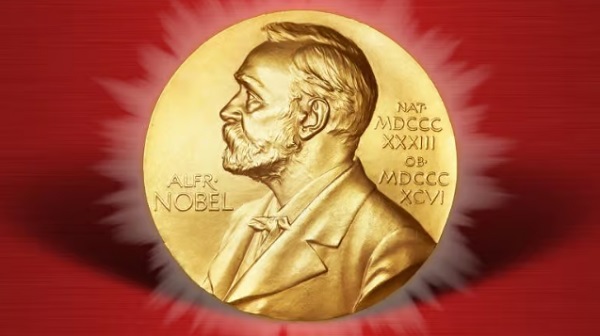
From the Brownstone Institute
By
Many news outlets reported the announcement of the Nobel Peace Prize on Friday by saying President Donald Trump had missed out (Washington Post, Yahoo, Hindustan Times, Huffington Post), not won (USA Today), fallen short (AP News), lost (Time), etc. There is even a meme doing the rounds about ‘Trump Wine.’ ‘Made from sour grapes,’ the label explains, ‘This is a full bodied and bitter vintage guaranteed to leave a nasty taste in your mouth for years.’

For the record, the prize was awarded to María Corina Machado for her courageous and sustained opposition to Venezuela’s ruling regime. Trump called to congratulate her. Given his own attacks on the Venezuelan president, his anger will be partly mollified, and he could even back her with practical support. He nonetheless attacked the prize committee, and the White House assailed it for putting politics before peace.
He could be in serious contention next year. If his Gaza peace plan is implemented and holds until next October, he should get it. That he is unlikely to do so is more a reflection on the award and less on Trump.
So He Won the Nobel Peace Prize. Meh!
Alfred Nobel’s will stipulates the prize should be awarded to the person who has contributed the most to promote ‘fraternity between nations…abolition or reduction of standing armies and…holding and promotion of peace congresses.’ Over the decades, this has expanded progressively to embrace human rights, political dissent, environmentalism, race, gender, and other social justice causes.
On these grounds, I would have thought the Covid resistance should have been a winner. The emphasis has shifted from outcomes and actual work to advocacy. In honouring President Barack Obama in 2009, the Nobel committee embarrassed itself, patronised him, and demeaned the prize. His biggest accomplishment was the choice of his predecessor as president: the prize was a one-finger send-off to President George W. Bush.
There have been other strange laureates, including those prone to wage war (Henry Kissinger, 1973), tainted through association with terrorism (Yasser Arafat, 1994), and contributions to fields beyond peace, such as planting millions of trees. Some laureates were subsequently discovered to have embellished their record, and others proved to be flawed champions of human rights who had won them the treasured accolade.
Conversely, Mahatma Gandhi did not get the prize, not for his contributions to the theory and practice of non-violence, nor for his role in toppling the British Raj as the curtain raiser to worldwide decolonisation. The sad reality is how little practical difference the prize has made to the causes it espoused. They bring baubles and honour to the laureates, but the prize has lost much of its lustre as far as results go.
Trump Was Not a Serious Contender
The nomination processes start in September and nominations close on 31 January. The five-member Norwegian Nobel committee scrutinises the list of candidates and whittles it down between February and October. The prize is announced on or close to 10 October, the date Alfred Nobel died, and the award ceremony is held in Oslo in early December.
The calendar rules out a newly elected president in his first year, with the risible exception of Obama. The period under review was 2024. Trump’s claims to have ended seven wars and boasts of ‘nobody’s ever done that’ are not taken seriously beyond the narrow circle of fervent devotees, sycophantic courtiers, and supplicant foreign leaders eager to ingratiate themselves with over-the-top flattery.
Trump Could Be in Serious Contention Next Year
Trump’s 20-point Gaza peace plan falls into three conceptual-cum-chronological parts: today, tomorrow, and the day after. At the time of writing, in a hinge moment in the two-year war, Israel has implemented a ceasefire in Gaza, Hamas has agreed to release Israeli hostages on 13-14 October, and Israel will release around 2,000 Palestinian prisoners (today’s agenda). So why are the ‘Ceasefire Now!’ mobs not out on the streets celebrating joyously instead of looking morose and discombobulated? Perhaps they’ve been robbed of the meaning of life?
The second part (tomorrow) requires Hamas demilitarisation, surrender, amnesty, no role in Gaza’s future governance, resumption of aid deliveries, Israeli military pullbacks, a temporary international stabilisation force, and a technocratic transitional administration. The third part, the agenda for the day after, calls for the deradicalisation of Gaza, its reconstruction and development, an international Peace Board to oversee implementation of the plan, governance reforms of the Palestinian Authority, and, over the horizon, Palestinian statehood.
There are too many potential pitfalls to rest easy on the prospects for success. Will Hamas commit military and political suicide? How can the call for democracy in Gaza and the West Bank be reconciled with Hamas as the most popular group among Palestinians? Can Israel’s fractious governing coalition survive?
Both Hamas and Israel have a long record of agreeing to demands under pressure but sabotaging their implementation at points of vulnerability. The broad Arab support could weaken as difficulties arise. The presence of the internationally toxic Tony Blair on the Peace Board could derail the project. Hamas has reportedly called on all factions to reject Blair’s involvement. Hamas official Basem Naim, while thanking Trump for his positive role in the peace deal, explained that ‘Palestinians, Arabs and Muslims and maybe a lot [of] people around the world still remember his [Blair’s] role in causing the killing of thousands or millions of innocent civilians in Afghanistan and Iraq.’
It would be a stupendous achievement for all the complicated moving parts to come together in stable equilibrium. What cannot and should not be denied is the breathtaking diplomatic coup already achieved. Only Trump could have pulled this off.
The very traits that are so offputting in one context helped him to get here: narcissism; bullying and impatience; bull in a china shop style of diplomacy; indifference to what others think; dislike of wars and love of real estate development; bottomless faith in his own vision, negotiating skills, and ability to read others; personal relationships with key players in the region; and credibility as both the ultimate guarantor of Israel’s security and preparedness to use force if obstructed. Israelis trust him; Hamas and Iran fear him.
The combined Israeli-US attacks to degrade Iran’s nuclear capability underlined the credibility of threats of force against recalcitrant opponents. Unilateral Israeli strikes on Hamas leaders in Qatar highlighted to uninvolved Arabs the very real dangers of continued escalation amidst the grim Israeli determination to rid themselves of Hamas once and for all.
Trump Is Likely to Be Overlooked
Russia has sometimes been the object of the Nobel Peace Prize. The mischievous President Vladimir Putin has suggested Trump may be too good for the prize. Trump’s disdain for and hostility to international institutions and assaults on the pillars of the liberal international order would have rubbed Norwegians, among the world’s strongest supporters of rules-based international governance, net zero, and foreign aid, the wrong way.
Brash and public lobbying for the prize, like calling the Norwegian prime minister, is counterproductive. The committee is fiercely independent. Nominees are advised against making the nomination public, let alone orchestrating an advocacy campaign. Yet, one laureate is believed to have mobilised his entire government for quiet lobbying behind the scenes, and another to have bad-mouthed a leading rival to friendly journalists.
Most crucially, given that Scandinavian character traits tip towards the opposite end of the scale, it’s hard to see the committee overlooking Trump’s loud flaws, vanity, braggadocio, and lack of grace and humility. Trump supporters discount his character traits and take his policies and results seriously. Haters cannot get over the flaws to seriously evaluate policies and outcomes. No prizes for guessing which group the Nobel committee is likely to belong to. As is currently fashionable to say when cancelling someone, Trump’s values do not align with those of the committee and the ideals of the prize.
-

 Business19 hours ago
Business19 hours ago$15B and No Guarantees? Stellantis Deal explained by former Conservative Shadow Minister of Innovation, Science and Technology
-

 Agriculture20 hours ago
Agriculture20 hours agoFrom Underdog to Top Broodmare
-
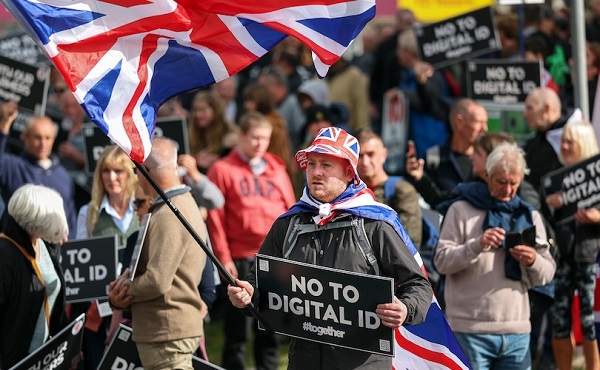
 Digital ID2 days ago
Digital ID2 days agoThousands protest UK government’s plans to introduce mandatory digital IDs
-

 Alberta1 day ago
Alberta1 day agoAlberta’s licence plate vote is down to four
-

 Bruce Dowbiggin1 day ago
Bruce Dowbiggin1 day agoIs The Latest Tiger Woods’ Injury Also A Death Knell For PGA Champions Golf?
-

 International2 days ago
International2 days agoTrump, Putin meeting in Hungary called off
-

 Carbon Tax2 days ago
Carbon Tax2 days agoBack Door Carbon Tax: Goal Of Climate Lawfare Movement To Drive Up Price Of Energy
-

 Business2 days ago
Business2 days ago“Modernization,” They Call It: How Ottawa Redefined Fraud as Progress





